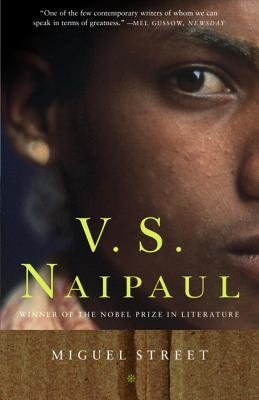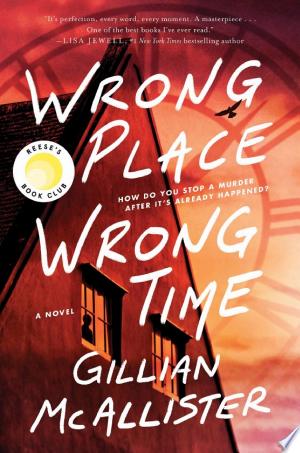Estimated read time: 8 min read
One Sentence Summary
"Miguel Street" is a vibrant collection of interconnected stories depicting the lives, struggles, and dreams of residents in a working-class neighborhood in Trinidad.
Table of Contents
Introduction
V.S. Naipaul’s Miguel Street is a captivating collection of linked short stories that vividly portray life in a Trinidadian neighborhood. Published in 1959, the book offers a humorous yet poignant glimpse into the struggles, dreams, and eccentricities of ordinary people living in a postcolonial society. Naipaul’s narrative shines a light on human vulnerability and resilience, making Miguel Street a timeless classic in Caribbean literature and world fiction.
This summary will guide you through the historical backdrop, key characters, plot highlights, themes, and literary techniques of Miguel Street. Whether you’re a college student aiming to grasp its academic significance or a lecturer preparing engaging classroom material, this overview balances depth with accessibility, without spoiling the charming surprises of Naipaul’s storytelling.
Historical Context
Postcolonial Trinidad and Tobago
Miguel Street is set against the backdrop of Trinidad and Tobago in the mid-20th century, a time when the island was transitioning from British colonial rule to independence (which it achieved in 1962). This era was marked by social stratification, cultural hybridity, and a search for identity among the island’s diverse population.
Naipaul’s depiction of Miguel Street—a fictional neighborhood in Port of Spain—captures the socioeconomic challenges faced by working-class Trinidadians, many of whom were descendants of African slaves and Indian indentured laborers. The mix of cultures, languages, and traditions created a unique, sometimes chaotic, social fabric.
Influences and Inspirations
Naipaul drew inspiration from his own childhood experiences in Trinidad. His deep understanding of the island’s cultural tensions and humor brings authenticity to the stories. The characters reflect real-life archetypes, revealing the universal human condition amidst local color and circumstance.
Brief Synopsis
Plot Overview
Rather than a continuous narrative, Miguel Street is a mosaic of interconnected stories, each focusing on a different inhabitant of the street. The narrator, an unnamed young boy, guides readers through the lives of his neighbors—each struggling with their own ambitions, failures, and eccentricities.
The stories explore themes of hope, disillusionment, friendship, and survival. Despite their hardships, the characters often respond with humor and resilience, painting a complex portrait of community life.
Setting
Miguel Street is a cramped, lively neighborhood in Port of Spain, Trinidad’s capital. The street’s atmosphere is vibrant and chaotic, filled with small homes, local shops, and gossip. The tropical climate, colonial architecture, and cultural diversity create a distinctive setting that feels both intimate and universal.
Main Characters
Below is a table summarizing some of the key characters who populate Miguel Street:
| Name | Role | Key Traits | Importance to Plot |
|---|---|---|---|
| The Narrator | Young boy, observer | Curious, reflective | Provides perspective and continuity |
| Bogart | Aspiring tough guy | Dreamer, pretentious | Symbolizes failed ambition |
| Hat | Street philosopher | Wise, eccentric | Offers insight and humor |
| B. Wordsworth | Poet | Sensitive, frustrated | Embodies artistic struggle |
| Man-man | Storyteller | Imaginative, dramatic | Adds color and folklore to the street |
| Elias | Worker, dreamer | Quiet, hopeful | Represents everyday struggles |
| Mrs. Hereira | Neighbor | Nosy, meddlesome | Drives social interactions |
These characters, among others, weave the fabric of Miguel Street’s community, each adding depth and texture to the stories.
Plot Summary
The Narrator’s Perspective
The unnamed boy narrator offers a unique vantage point—a blend of innocence and growing awareness. His observations on neighbors’ antics and hardships provide the emotional core of the book. His youthful curiosity invites readers to explore the complexities of adult life through fresh eyes.
Bogart’s Dreams
Bogart, named after the famous actor Humphrey Bogart, tries to project toughness but often fails comically. His attempts at machismo reveal the fragility behind his bravado. Through Bogart, Naipaul explores themes of identity and self-delusion.
Hat’s Wisdom
Hat, an older man known for his philosophical musings, serves as the street’s unofficial sage. His reflections on life’s absurdities add both humor and depth. Hat’s character challenges readers to reconsider the notions of success and failure.
B. Wordsworth’s Artistic Struggles
B. Wordsworth is a sensitive poet whose artistic aspirations clash with the harsh realities of Miguel Street. His frustration and alienation highlight the difficulties faced by creatives in marginalized communities.
Man-man’s Storytelling
Man-man captivates the street with his tall tales and dramatic flair. His stories blend fact and fiction, illustrating the power of narrative to shape communal identity and personal escape.
Elias’s Quiet Hope
Elias, a humble worker, embodies resilience. Despite limited opportunities, he maintains hope for a better future. His story underscores the everyday courage of Miguel Street’s inhabitants.
Mrs. Hereira’s Meddling
Mrs. Hereira, the neighborhood busybody, stirs up gossip and conflict. Her character represents the social dynamics and tensions that characterize close-knit communities.
Themes and Motifs
Community and Isolation
Miguel Street explores the delicate balance between belonging and alienation. The characters are bound by proximity yet often experience profound loneliness. Naipaul reveals how community can provide support and entrapment simultaneously.
Dreams Versus Reality
Many inhabitants harbor dreams of escape or success but confront harsh realities. The tension between aspiration and limitation drives much of the narrative’s emotional weight.
Identity and Postcolonial Legacy
The stories delve into questions of identity shaped by colonial history, cultural hybridity, and socioeconomic status. Characters struggle with self-definition in a world marked by inherited inequalities.
Humor as Survival
Humor permeates the book, serving as a tool for coping with adversity. Naipaul’s wit highlights human resilience and the absurdity of life’s challenges.
Storytelling and Memory
The motif of storytelling appears repeatedly, emphasizing its role in preserving culture, forging connections, and shaping personal and collective memory.
Literary Techniques and Style
Narrative Structure
Naipaul employs a linked-story format, where individual tales stand alone but collectively build a rich portrait of Miguel Street. This structure allows for varied perspectives and thematic exploration without a linear plot.
Language and Dialogue
The prose blends Standard English with Trinidadian Creole, capturing the authentic voices of characters. The dialogue is lively and nuanced, reflecting social hierarchies and cultural identity.
Symbolism
Objects and characters symbolize broader themes, such as Bogart’s tough-guy persona representing fragile masculinity or the street itself as a microcosm of postcolonial society.
Realism and Humor
Naipaul's style combines stark realism with dry humor. His unflinching depiction of poverty and struggle is balanced by moments of levity, making the stories relatable and engaging.
Emotional Resonance
The understated narrative tone conveys deep emotional truths, inviting readers to empathize with characters’ joys and sorrows without overt sentimentality.
Author’s Background
V.S. Naipaul, born in Trinidad in 1932, is a Nobel Prize-winning author known for his incisive exploration of postcolonial identity. His writing often grapples with themes of displacement, cultural conflict, and the legacy of empire.
Naipaul moved to England for education and literary pursuits, where he developed a distinctive style marked by clarity and critical insight. Miguel Street is one of his early works, showcasing his talent for storytelling rooted in personal experience.
His background as a Trinidadian of Indian descent informs his nuanced portrayal of Caribbean life, blending insider knowledge with universal themes. Naipaul’s influence extends beyond Caribbean literature, impacting global discussions on colonialism and identity.
Key Takeaways
- Miguel Street vividly captures the complexity of postcolonial Caribbean life through interconnected stories.
- The book balances humor and pathos, portraying characters’ dreams and struggles with empathy.
- Naipaul uses language and narrative structure to reflect cultural hybridity and social dynamics.
- Themes of community, identity, and resilience resonate beyond the specific setting.
- The collection illustrates the power of storytelling as a means of survival and self-understanding.
Reader’s Takeaway
Readers can expect a richly textured journey into a world both foreign and familiar. Miguel Street offers intellectual insights into colonial history and cultural identity, while its emotional depth fosters empathy for marginalized lives.
The book encourages reflection on how place shapes people and how humor can illuminate human endurance. Whether approached for literary study or personal enrichment, Miguel Street leaves a lasting impression through its authentic voices and compelling narratives.
Conclusion
V.S. Naipaul’s Miguel Street remains a vital work for understanding Caribbean literature and postcolonial experience. Its masterful blend of humor, realism, and social critique invites readers to explore the vibrant yet challenging lives on a Trinidadian street.
By engaging with Naipaul’s nuanced characters and themes, readers gain not only knowledge but also emotional connection. This summary aims to inspire further exploration of Miguel Street, a book that continues to illuminate the complexities of human life in a changing world.
Miguel Street FAQ
What is the central theme of Miguel Street by V.S. Naipaul?
The central theme of Miguel Street revolves around the lives of the residents of a small street in Port of Spain, Trinidad, highlighting themes of poverty, dreams, failure, and the resilience of the human spirit.
Who are some of the main characters in Miguel Street?
Some main characters include Bogart, the aspiring actor; Hat, the storyteller; Bolo, the boxer; and Mr. Popo, the shopkeeper. Each character has unique quirks and stories that contribute to the narrative.
What is the narrative style of Miguel Street?
Miguel Street is written in a series of linked short stories narrated by an unnamed young boy, offering a first-person perspective on the lives and events in the street.
How does V.S. Naipaul depict life in Trinidad in Miguel Street?
Naipaul portrays life in Trinidad through vivid descriptions, capturing the socio-economic struggles, cultural diversity, and the everyday challenges faced by the street's inhabitants.
Is Miguel Street based on V.S. Naipaul's personal experiences?
Yes, Miguel Street draws heavily from Naipaul's own childhood experiences growing up in Port of Spain, reflecting authentic insights into the community and environment.
What literary significance does Miguel Street hold?
Miguel Street is considered an important work in Caribbean literature, showcasing Naipaul's early narrative style and his exploration of postcolonial identity and cultural complexities.
Are there recurring motifs in Miguel Street?
Yes, recurring motifs include dreams and aspirations contrasted with reality, the passage of time, and the sense of community amidst hardship.
What is the tone of the stories in Miguel Street?
The tone is often bittersweet, combining humor with pathos, as it captures both the hopes and disappointments of the characters.
How does Miguel Street explore the concept of failure?
Many characters in Miguel Street have ambitions that remain unfulfilled, illustrating how societal and personal limitations contribute to a pervasive sense of failure.
Can Miguel Street be read as a coming-of-age story?
Yes, through the young narrator's eyes, the collection reflects a coming-of-age perspective as he observes and learns from the lives of the people around him.





